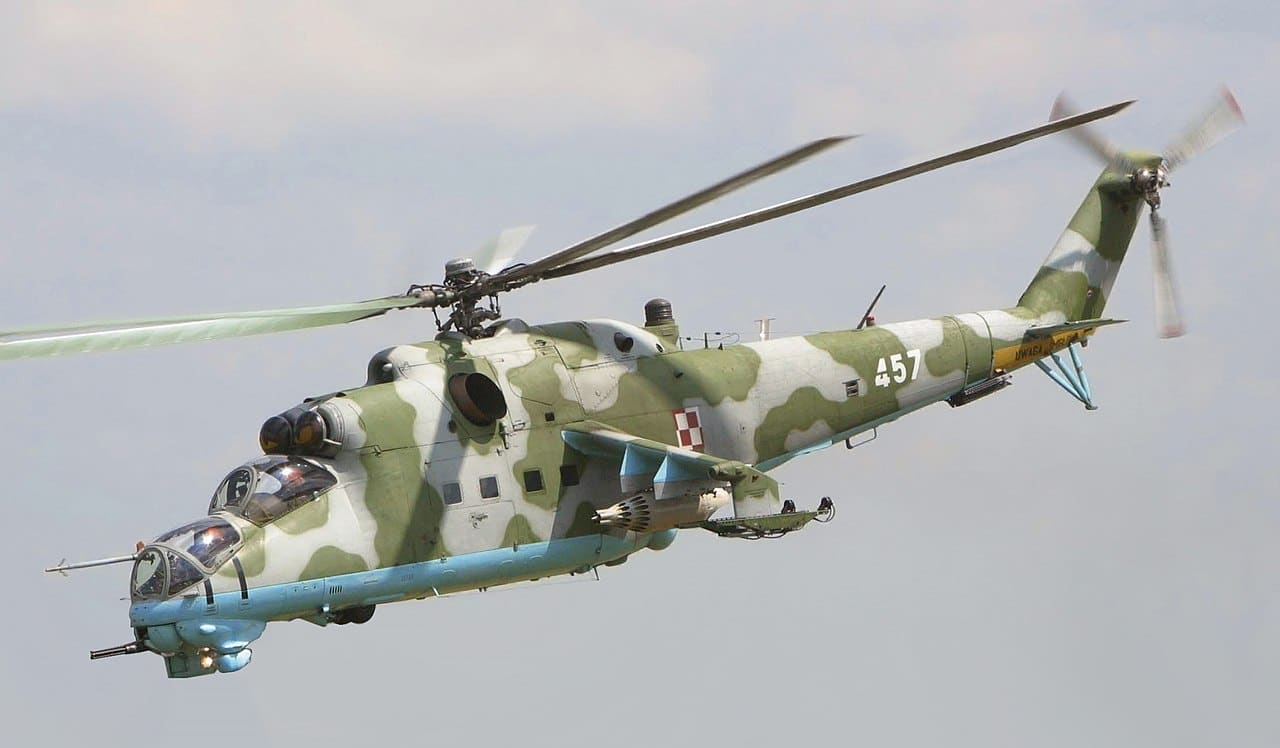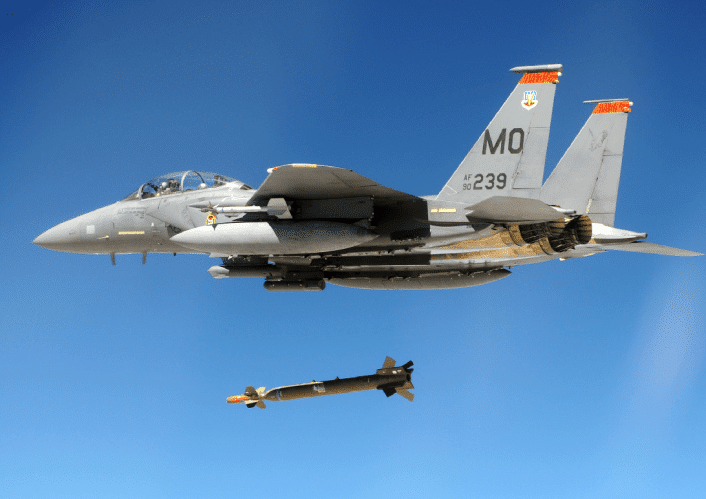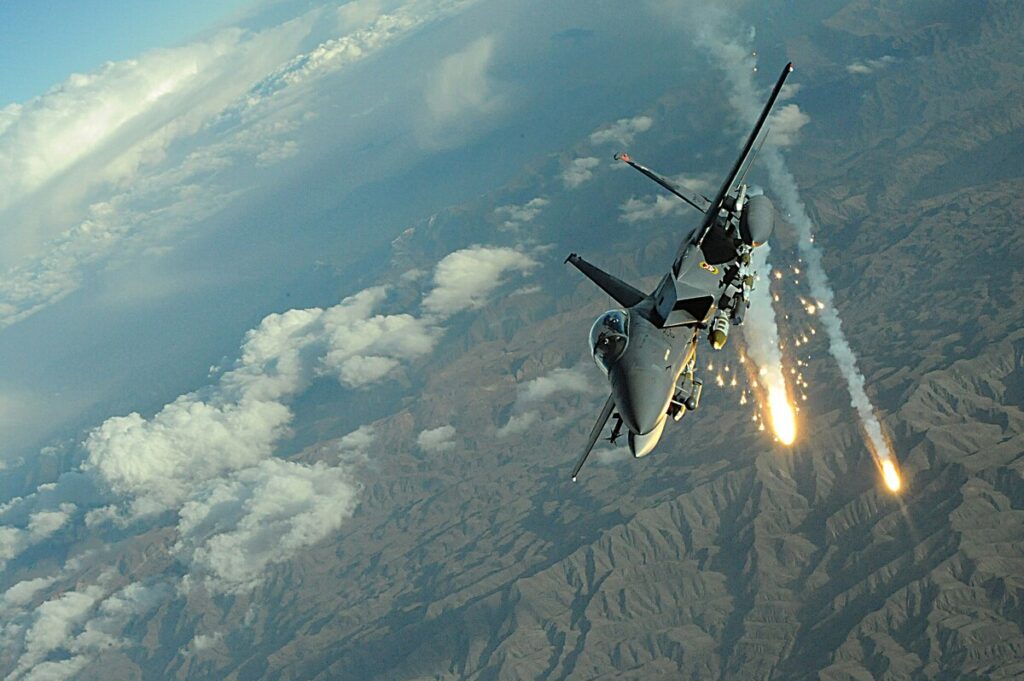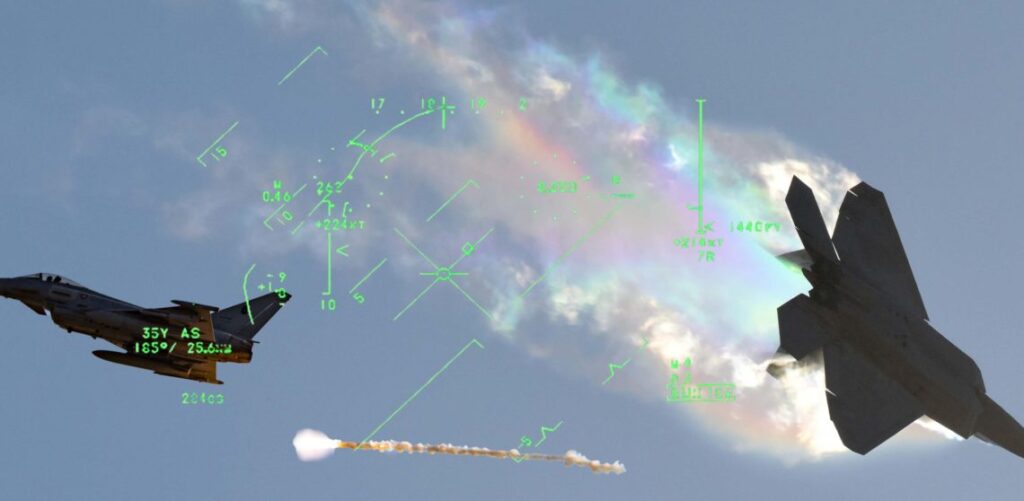America’s F-15 Eagle has long since secured a position in the pantheon of the world’s greatest fighters. With an incredible air combat record of 104 wins and zero losses, the fourth generation powerhouse we call the F-15 remains America’s fastest air superiority fighter, beating out even the venerable F-22 Raptor. But the F-15E Strike Eagle, the F-15’s multi-role sibling, was never really intended to serve as a dedicated air-to-air platform. Instead, the F-15E’s goal was to leverage the speed and payload capabilities of an F-15 Eagle for ground attack missions — making it one of the most capable multi-role attack fighters of its generation.
In 1991, Air Force Capt. Tim Bennett was serving as a flight leader for the 335th Tactical Fighter Squadron out of Al Kharj Air Base in central Saudi Arabia, in support of Operation Desert Storm. The U.S.-led coalition had opted to begin the war with airpower, flying hundreds of sorties per day from land and carrier-based fighters throughout the region. Al Kharj, where Bennett flew out of, was home to five squadrons of F-16s and F-15Es, so flight operations were continuous.
“We were slightly undermanned in our unit and, if you were a flight leader or an IP [instructor pilot], you flew a lot,” Bennett would later write for Air Force Magazine.

Related: The Air Force’s F-15E ‘bomb truck’ can now carry 15 JDAMS
While there’s no question that the Iraqi military was outclassed in every appreciable way by the massive force fielded against it, Iraq was not without serious and sizeable defenses. In fact, Iraq’s capital in Baghdad may have been one of the most heavily defended cities on the planet when Coalition aircraft first screamed across Iraq’s border on 17 January 1991. It may be fair to say that the Coalition Force’s victory was a foregone conclusion as the Gulf War began, but the tactical and strategic domination of the Iraqi forces was not.
“There were some nights over there, especially during the first two weeks, when the AAA and SAMs [surface-to-air missiles] were really bad. I was on both missions when we had F-15Es shot down. Those weren’t fun at all.”
Really bad is right. Some pilots compared the volume of anti-aircraft fire over cities like Bagdhad to low-hanging clouds, the fog of fire was so dense. In another airstrike operation held in the early days of the Gulf War, one F-16, piloted by Major Emmett Tullia, had six surface-to-air missiles fired at him in quick succession, but incredibly managed to dodge the whole half-dozen. Other pilots, unfortunately, weren’t quite as lucky.
Related: How one F-16 dodged 6 surface-to-air missiles in an airstrike gone wrong
Before the brief conflict came to a close, the United States would lose 27 airplanes and five helicopters in combat. Nine pilots or crew members would become prisoners of war, while 33 others would perish.
Bennett and his F-15E would fly a total of 58 combat missions throughout his deployment. During one mission, he was targetted by a capable Iraqi MiG-29 Fulcrum that ultimately decided to pursue another F-15E flying further ahead. Bennett watched as the MiG pilot lost his bearings and flew straight into the ground.
“It is unbelievably disorienting to fly low at night and work off of radar with only yourself in the cockpit. The MiG pilot was trying to converge on an aircraft moving at 600 knots at 100 feet altitude. He just got too low.”
One mission, however, stands out as particularly exceptional. It came during a Combat Air Patrol mission, hunting for air defense platforms to take out. Instead, Bennett and his weapons officer, Capt. Dan Bakke, ended up shooting down an Iraqi helicopter using a 2,000-pound laser-guided bomb instead. Yes, it’s exactly as crazy as it sounds.
February 14, 1991: Valentine’s Day

Related: Desert Storm’s air campaign was absolutely massive
On Valentine’s Day of 1991, Bennett and Bakke were conducting an early morning Scud combat air patrol — flying around northwest Iraq looking for mobile Scud missile platforms that could pose a threat to American forces. They were flying above the cloud cover, waiting to receive targeting coordinates from a nearby AWAC (an E-3 Airborne Warning and Control System aircraft), when they received a different kind of call: An American Special Forces team was operating secretly more than 300 miles from the border, identifying Scud launchers for engagement. It was incredibly dangerous work, and they’d been discovered by the Iraqi military.
“We had ten to fifteen Special Forces teams in the general area looking for Scuds. This team was about 300 miles across the border,” Bennett said.
No F-15E Strike Eagle had ever scored an air-to-air kill against anything before, but the aircraft was equipped for it. The F-15E was intended to self-escort on its attack missions. In other words, its Eagle DNA paired with a couple of air-to-air missiles made the Strike Eagle more than capable of fighting airborne targets.
As the AWAC relayed that there were five Iraqi helicopters closing with the Green Beret’s position, Bennett diverted toward the Special Forces team and instructed his wingman to take a trailing position four miles behind him as he pressed down through the cloud cover. Once they came to within about 50 miles of the helicopters, Bakke spotted them on radar, traveling from West to East.
But the air war over Iraq was massive. General Norman Schwarzkopf’s coalition had a whopping 2,430 military aircraft at its disposal, hailing from a laundry list of nations and military forces. The pilot knew the U.S. had special forces helicopters, likely the 160th SOAR, based in Syria. If they were coming to pull the American team out, they’d be flying on the same general course as the helicopters they’d spotted.
They needed to be sure the choppers weren’t friendly. He called back to the AWAC to confirm they were clear to engage.

Related: Could we really build a B-1B Gunship?
“We don’t have any friendlies in the area. Any helicopters you find, you are cleared to shoot,” the E-3 AWAC, callsign Cougar, responded.
Bennett brought his F-15E down to just 2,500 above the ground, cutting through the night sky on a direct course for where he was told the American operators should be, and where enemy helicopters appeared to be flying. They passed through some low-hanging clouds and emerged on the other side, only 19 or 20 miles from their targets.
It was right around then that he and Bakke noticed the Iraqi helicopters were flying and stopping at regular intervals, dropping off ground troops to engage the Special Forces team. In effect, the helicopters and ground troops were coordinating to herd the American Green Berets east into an unwinnable engagement. The helicopters, now discernable as Mi-24 Hinds, were placing troops in strategic locations to give the Iraqi’s helicopter-backed warfighters the decisive advantage.
The Iraqi troops on the ground noticed the Strike Eagle’s approach, closing with them almost three times faster than a Formula 1 Indy Car could manage on an open straight. They opened fire.

“By this time, we were screaming over the ground, doing about 600 knots–almost 700 mph. The AAA [Anti-Aircraft Fire] was still coming up pretty thick. Our course took us right over the top of the Iraqi troops to the east of the team,” Bennett recalled.
“We didn’t know exactly where our team was, but it was looking to us like things were getting pretty hairy for the Special Forces guys.”
Bennett decided to engage the lead helicopter, but not with his Aim-9 Sidewinders which were designed for air-to-air engagements. Instead, he planned to lob a 2,000-pound GBU-10 Paveway II bomb at it. If they were lucky, the bomb would find its target while the Hind was on the ground depositing troops, wiping them all out in one fell swoop.
“It would also give the other helicopters something to think about, which might give the team a chance to get away in the confusion.”
Bennett radioed back to his wingman, flying four miles to his rear, and told him to take out the first helicopter he saw pop up with an AIM-9 Sidewinder missile.

Related: This combat Cessna can shoot Hellfire missiles
Because they were moving so fast through the sky to close with the team in trouble, the unpowered bomb actually had a greater range than the Sidewinder missile. Bennett released the bomb 4 miles out from the Hind-24, with Bakke carefully keeping his laser sighted on the helicopter.
“There’s no chance the bomb will get him now,” Bennett thought to himself.
The Iraqi Hind-24 lifted off the ground and began to accelerate away. Bakke was keeping the laser on target, but bombs aren’t much use against moving, airborne helicopters. Bennett prepared to try again… but before he could, a bomb flew into his field of view on the targeting screen.
“There was a big flash, and I could see pieces flying in different directions. It blew the helicopter to hell, damn near vaporized it.”
Of course, scoring the F-15E’s first air-to-air victory might be a point of pride for Bennett and Bakke, but they still had a job to do. He ordered his wingman to drop three Mk. 82 500-pound bombs on the same coordinates to wipe out and Iraqi soldiers who’d survived the blast. By then, the AWAC already had bombers inbound to take care of the rest, and the other Iraqi Hinds were making a run for it to the north. Bennett went to pursue, but found his fighter right in the path of bombing runs from aircraft now coming in to support the Green Berets below.
Still not quite done, Bennett and Bakke moved on to engage a mobile Scud on a nearby launchpad before heading home.
“The Special Forces team got out OK and went back to Central Air Forces headquarters to say thanks and confirm our kill for us. They saw the helicopter go down. When the helos had bugged out, the team moved back to the west and was extracted.”
You can read Capt. Tim Bennett’s full account of his time flying the Strike Eagle in the Gulf War here.
Read more from Sandboxx News
- The Air Force’s F-15E ‘bomb truck’ can now carry 15 JDAMS
- F-16XL: Why America didn’t get the best F-16
- Could we really build a B-1B Gunship?
- This combat Cessna can shoot Hellfire missiles
- Boeing (McDonnell Douglas) F-15 Eagle: Everything you need to know
This article was originally published 9/9/2020



